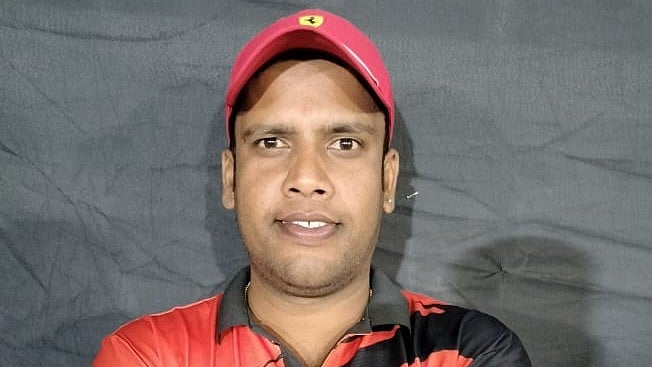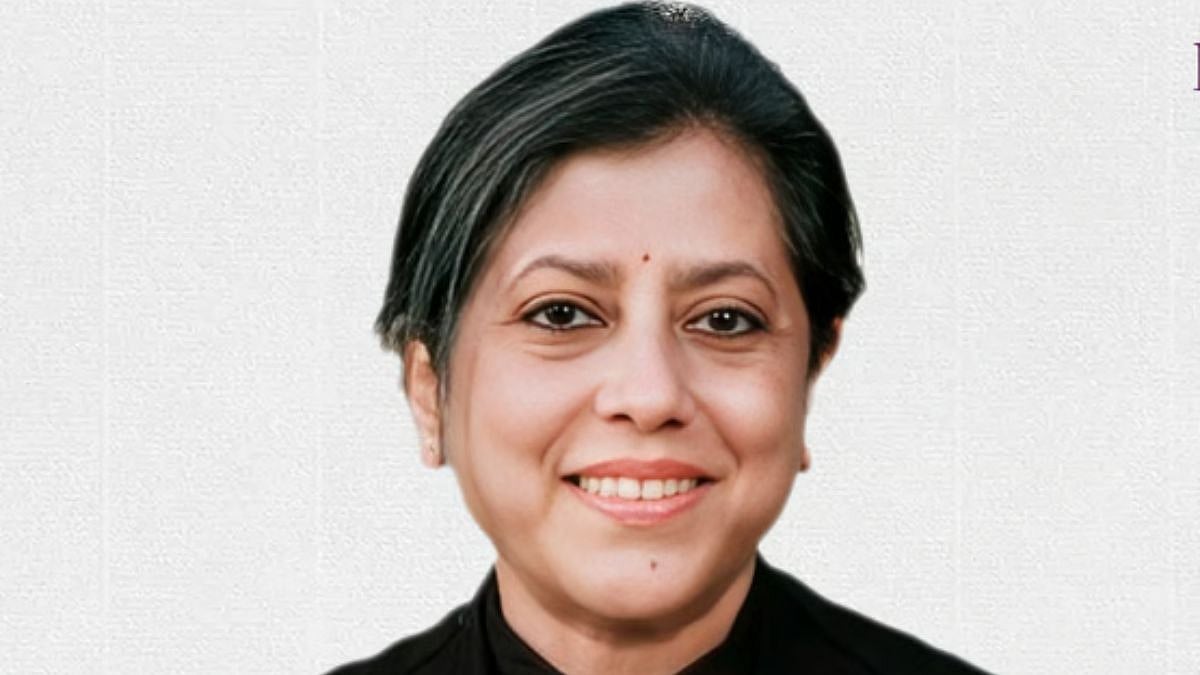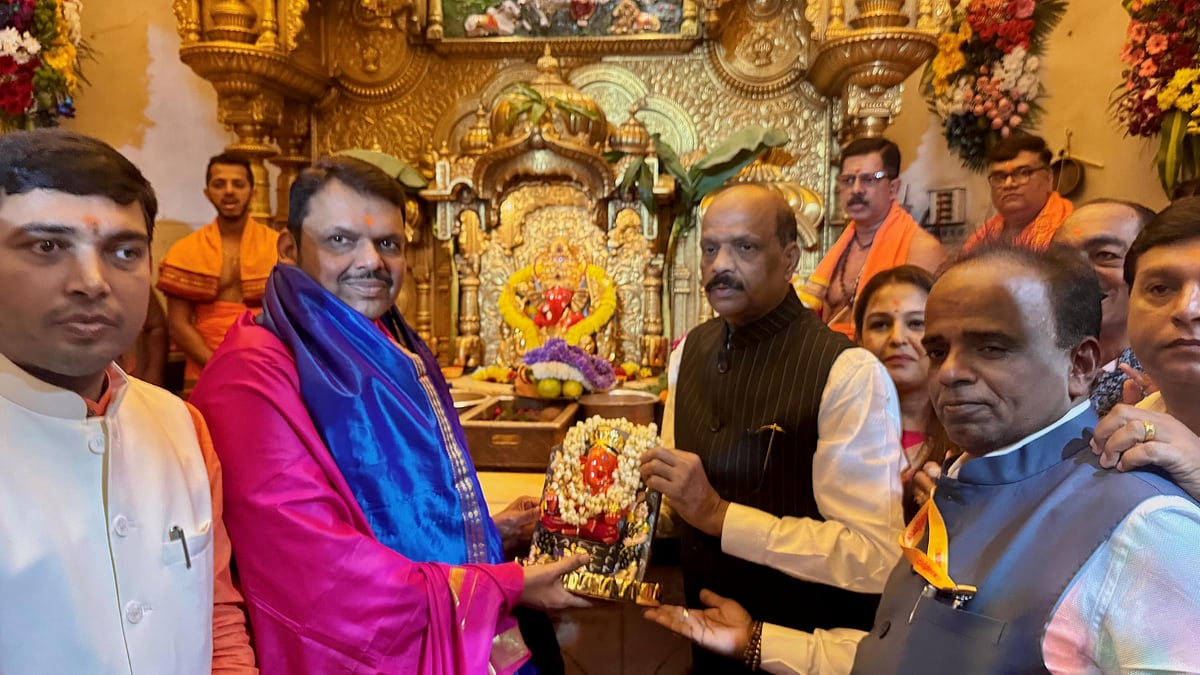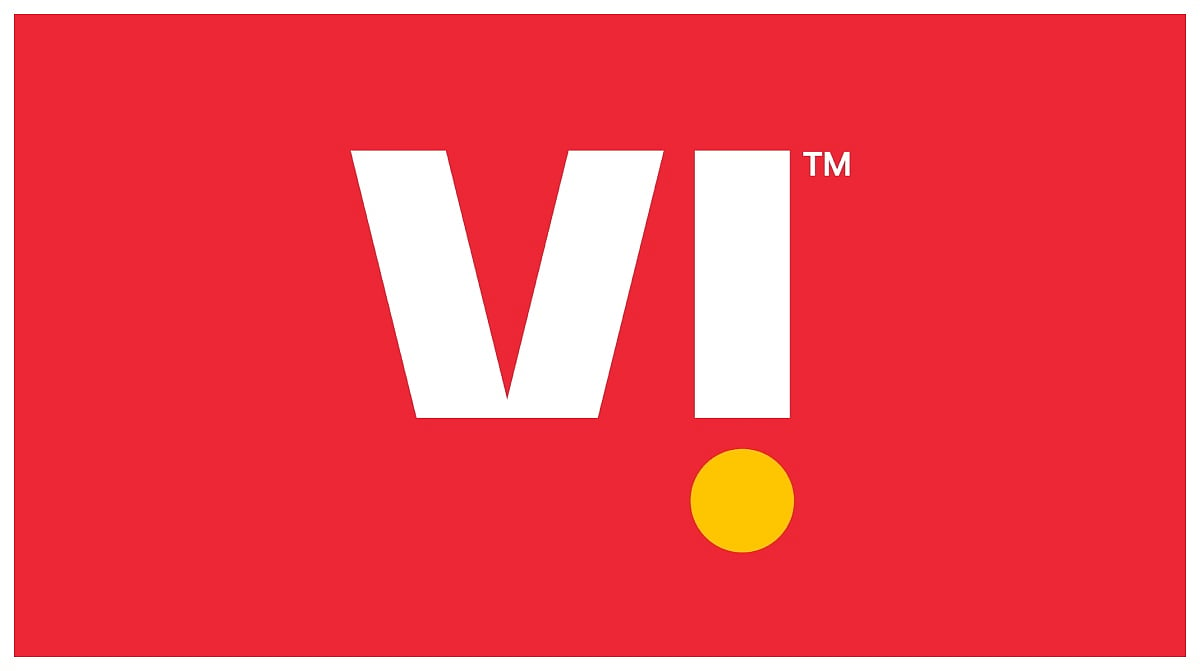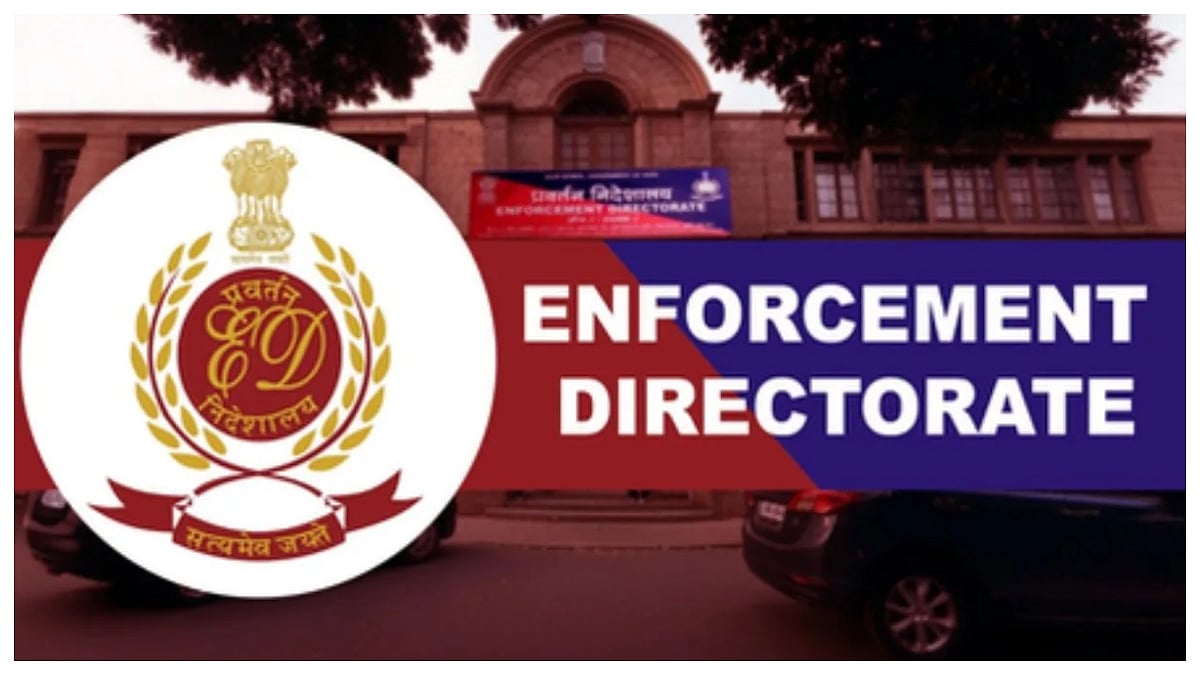Our thoughts shape our vision. Our vision becomes our action, which shapes our destiny. Chief Minister of Maharashtra, Eknath Shinde (Saheb, as he is fondly called), has a vision to enable every person of the state with the help of technology. Since the government has all the database, it should take a step forward and provide the benefits due to the citizen at their doorsteps, rather than he or she visiting the government offices multiple times to get their work done, said Anand Sharad Madia, Officer on Special Duty to the Chief Minister of Maharashtra.
Madia’s expertise lies in the technology sector and he aims to use his knowledge acquired over two decades for betterment of the state. He was born and brought up in Mumbai and now returned back to the state to serve it as a payback.
In 2014, he was appointed by the Government of Sikkim as Ex Officio Secretary. Using his core competence, he focused on e-governance projects in the state of Sikkim. In 2016, he was appointed as an advisor by the Chief Minister of Arunachal Pradesh. His focus during the stint in Arunachal Pradesh was inward investments and use of technology for betterment of governance. He was also part of the Arunachal Investment Council.
In July this year, 49 year old Madia joined the Chief Minister’s Office, Maharashtra, as Officer on Special Duty and has been granted rank equivalent to a Secretary of State. He is once again using his vast knowledge of technology and public administration to achieve the Sustainable Development Goals outlined by the NITI Aayog. His focus is on health, education, human development, startup ecosystem, industry and agriculture.
He strongly believes that Maharashtra has tremendous potential for growth and becoming a 1$ trillion economy. He is focused on how disruptive tech can contribute to transforming the socio-economic landscape of the state.
He visited the Free Press Journal office on January 5 and met the top management of the newspaper. He spoke with Dominic Rebello and RN Bhaskar (both from FPJ) on how technology can be an enabler and help farmers and citizens in far off areas to get their issues resolved. He also spoke about the Samruddhi Mahamarg project which is completely IT driven and will lead to prosperity.
Edited Excerpts:
1. Why is Maharashtra now focusing so aggressively on the Information technology (IT) sector or IT enabled services?
A one-line answer will be that we have no other option. Today, the phones and the iPads have become an extension to the human body itself. It has become the way we live. If you see in the last few years, banking is digitised. I have not gone to the banks in years, filing of income tax is digitised, ordering food is digitised, meeting friends is digitised and discovering people is digitised. Now, if the government does not take full benefit of the digitisation for the benefit of the society, then we are obviously not doing something right.
Today, if it is possible for me today to ensure that a person from Chandrapur does not need to come to Mumbai to meet the Honourable Chief Minister (CM) or Deputy CM with a challenge, a good wishes or an invite, then I have achieved my job effectively. I still want that person to speak, meet and talk to the CM, but I don't want to get them to take the trouble to travel so long and spend money on it. Doing that is not feasible in today's age and time. This government is doing its best to ensure that all services are put in electronic format. We are certain that we want to take all citizen services to electronic format, a digital format, something that using an app can be accessed. The Chief Minister has recently issued orders that a CM's office is open in all the districts. The office is manned. So, a person who wants to communicate to the CM can do so by going to his District Collector’s office, within which there is a CMO. In locations where Internet connectivity is a challenge, we are coming out with a simpler mode of service delivery, also using basic SMS. In locations where the Internet is abundantly available because of 5G penetration, the CM is going to be online, not just his avatar, to meet and interact with people.
Eventually, we want to go to a position where meetings can happen online. It will take time, but then just see the number of decisions, the amount of transparency, governance that can be enabled using this. At the end of the day, the government is responsible to the people. It's not the other way around. So, if a person sitting in an X, Y, Z location can see as to what the Chief Minister has done for them, look at what decisions the government has taken, then they will feel reassured. Today, there is ambiguity as to whether a certain action or decision will be taken or not. So, IT is the only medium that will work.
Today, there is 85% of mobile phone penetration in Maharashtra. So, 85% of the population can be made aware of a decision, and can be made aware of a situation. Today, a farmer in his or her own farm can get an SMS or a WhatsApp message, saying that at 4 o'clock the water is going to be released. That person will be more prompt, ready for the water to come in and to ensure that irrigation is done properly. These are small things, but the day the delivery starts happening, will make effective change to the citizens’ life. And for that IT is crucial, critical.
One of the biggest contributors, enablers, incentivisers of this entire digitisation program is the Samruddhi Mahamarg project. What is your take on that?
The Samruddhi Mahamarg is not just a road for travelling from one place to the other. It's -- a road to prosperity. It passes through so many districts in the state -- on both sides of the road -- which will see so much development. A person passing through or a person living next to it will be able to utilise that development for growth financially, spiritually and knowledge wise. Because we have spiritual centres, a financial district, a knowledge city, a logistics hub and a transport hub coming there.
It is so beautifully made that people are crossing speed limits. So, this Mahamarg is going to be completely IT driven. But by the time we are done with it, there is going to be so much infrastructure on the road itself. Because every life is precious, by using IT services on the road we want to ensure that there is no challenge to the speed limit. Just imagine that from one location, my children can study in that area because of the education hub. Maybe, I drive 45 minutes and I get into the logistics hub. Near to the logistics hub is either the financial hub or the banking system or any of the food processing parks, I will be able to add value to my produce.
If I am not an agriculturist, and let’s say I am making Kolhapuri chappals, we will be creating a hub there where a person can put up his products, which can be then picked up and bulk transported or exported. And this, I think, this entire logistics will be connected using IT. Today, when we see the Amazons of the world develop there are a lot of stories which can be recognised in India also because of IT. Then, it is just how you then position it. So, this Mahamarg will add a whole new vein in the state.
3. What are the investments that you are making in the IT sector and what kind of returns do you expect?
The government is currently investing close to a few thousand crores - from getting the records put straight and coming out with a citizen database to ensure that all the beneficiaries are mapped and can get due benefits made available to them is also a part of IT enabled services.
This is where the government is insuring or investing money right now. To give you an example, a person in the family gets an old age pension. But that is as far as one person is concerned. Now, as soon as I have that onboarded on my citizen's database that this person is getting this, lives in this area, is doing these things for the profession, I will be able to propagate the other benefits available to that person or that family as a proactive measure. The citizens should not come and tell me to give me disability benefits. The citizen should not come and tell me that I have become a senior citizen and I have not been able to avail the benefit the government has promised me. In fact, my system should be able to map the senior citizen and communicate directly with the person that this benefit is due to you. All he will have to do is to authenticate himself through a valid proof and avail of the benefits.
If a farmer is due a certain amount for crop insurance or any other scheme, we should be able to deliver it to them. Unless and until I use IT to get my record right, how will I be able to do that? So, the citizen record is one such initiative. There are various other schemes coming in place. For example, the closest to the Honourable CM and Deputy CM’s heart is infrastructure. So currently on the coastal road, we are running three months ahead of schedule. The reason why that is happening is that it is being monitored on a daily basis. This is just one thing.
There are so many infrastructure projects which are happening right now. The way various roads are being mapped and monitored on a daily basis, the Honourable CM is now coming out with an infrastructure dashboard, where every infrastructure project, not only be it construction infrastructure, where every project which is vital, critical, can be or should be taken in the war room, including infrastructure, will now be on that dashboard.
The secretary of the department, the people who are in charge of running that project, including the contractors will get information on a daily basis. This information will then be disseminated to the people, which will include the details of the road, the contractor, and the officer responsible for it. If you have a problem with the road or with anything, we are here, but these are the actual people who have taken up the responsibility, please call them. It is high time Mumbaikars lived in a better city. So, the way we are pushing things to happen, we will see a largely beautiful, more liveable city over the next couple of months. The government is doing everything to fast track projects and bring in transparency.
4. How will IT benefit agriculture, which accounts for 50% of the workforce in India and the population?
The government is very soon coming out with policies, tenders to ensure that all the land parcels are mapped using satellites. Once this happens, using the satellites, the government of India and the state government will be able to monitor the land parcel from the day sowing happens till cultivation takes place. Any challenges amidst those times can be monitored. Using Geographic Information System (GIS), identification of crops can also happen and will happen.
For example, if in a location there is a drought or flood, we will be able to know at what level was the crop damaged and also in what portion of the land the crop was damaged. Artificial intelligence (AI) will give us a complete statement of that, which then just needs to be vetted once by the people on the ground and the compensation will go into the farmers' accounts. This is only possible using IT as a medium. This will eliminate the conventional route of people going to the spot and surveying the land.
For the last one year, this is already happening in Gujarat - every square inch of the land parcel is being mapped. For Kisan Bima Yojna, this is the technology that is used to dispense the money from the insurance companies to the farmers. The land deeds have been digitised, what crop is growing has been digitised. Haryana and Maharashtra are about to do it. And these technologies have been developed in-house by the Government of India. For satellites, we have to use services. But mapping a land parcel, identifying water, and more than six variants of agricultural crops was a distant dream a couple of years ago. But today I can confidently say we are already doing 12 and will soon be doing identification of 18 crops.
5. All this digitisation of the farm level with drones, with satellite mapping requires you to train an army of people who can read digitised maps. Are you creating that scale?
Yes. Under the skilling mission, the Government of Maharashtra is not only setting up skilling colleges for agricultural enablement but are also setting upskilling institutes for future technologies in every district. We are working backwards.
Even in the case of agriculture, we spoke about satellites, but on the ground if my soil is compromised, it doesn’t have enough nutrients, how will the crop grow? So, I will be using IoT-based devices for this. I can't say we'll be doing the entire bulk of it, but there's going to be a lot of exercise that is going to happen to map and identify the soil type.
Historically, it has been seen that somebody grows one crop - the father did it as did the grandfather, and now the son wants to do the same thing. The government will proactively give advisories saying that this land parcel is fit for certain kinds of crops.
Maharashtra’s weather and soil conditions are so phenomenal that we can take over the entire floriculture of the Netherlands in one year. We put a Pointsman to do this as a mission director. The only job that needs to be given to that person is to ensure this happens. That is the kind of fertile soil we have. And we still buy Dutch roses. But, it is nobody's fault - neither the government's nor the farmers’. It's just that now with IT and more knowledge transfer we have realised that these are the skills that we can go to. At the state level, now there is an organisation called MITRA, which is the state’s NITI Aayog and its mandate is to find out what needs to be done. The government is into governance, but the growth, the vision, the map, somebody will have to be a part of the government and guide them and act like facilitators.
Unless and until we take that next step forward, and change proactively the systems, the laws, the way things are operating, things will not go to the next level. This is just one example. You know, there is so much that can be done. And IT and reaching out to people is the only option that we have.
6. Since you are going to be using IT to look into every aspect of agriculture, one of the biggest variables and imponderables would be climate change. Climate change can impact agriculture in a way that we have not even imagined. The only solution to my mind is for the state and for the sector to promote hydroponics in a big way.
There is a gentleman, I can't officially name this person yet, who will very soon be becoming a part of MITRA. And, he has been chosen or been placed in the Centre by the Prime Minister because of his knowledge in hydroponics and progressive agriculture. I have been honoured to meet him a couple of times to understand the amount of information or knowledge he has. He is from Maharashtra and every time he is back in the state, he ensures that he stays in his farm and does farming. He wears a suit when he comes for the official meetings, but his nails still have soil in them. He is not lost touch with the ground. These are the people who can make the change.
7. We are very passionate about agriculture and did a nine-part series on Future of Agriculture during the COVID Times in the form of a webinar in partnership with SIES and NMIMS. We would be happy to connect the bureaucrats and the corporate world.
The state has a phenomenal person as its CM. I'm not saying it because I'm working for him or his office. I am here at the pleasure of the Chief Minister and to pay back to the city and state where I was born. He is eager to meet and learn and a go-getter. I am not from any of the services. I am here because this person genuinely wants to change and will make it happen. I have seen 600 people in Varsha at 3 in the morning. He's a very different Chief Minister, he's a people’s person. I worry about him for security reasons because he is always standing with the crowd. He says he derives his strength from being of help to people and thereby their blessings. If he promises something, he will never go back on his words. During COVID times, when he was the Health Minister, he wore two body suits and went into the hospital. So, there’s going to be a sea of change and that too very soon.
8. Between the private sector’s contribution to build IT infrastructure that the state needs and the state’s own IT department. Where would the emphasis be?
On both. What we have done is that we have reached out to all the top head-honchos - the heads of large IT organisations. For example, TCS. The Honourable Chief Minister has asked them to come aboard and help us. They are doing this on a day-to-day basis and the CM is governing this on a day-to-day basis. He has asked them to please come and help us on how we should structure the department, structure the policy, and take it to the next level. The Economic Committee that was recently announced has just three people from the government other than the Chief Minister and Deputy Chief minister, it has just three secretaries. The rest of the 10 to12 members are all industrialists. To get input from them will benefit us. To become a 1 trillion-dollar economy. I will need even the shoe polish guy on the station to also benefit because when he does, it adds to my state's financial value considerably. So, the state is proactively gunning, trying to become a 1 trillion with an all-inclusive approach.

